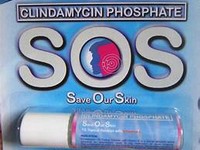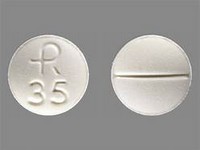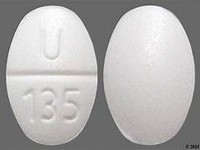Trimipramine

CLINICAL USE
Tricyclic antidepressant
DOSE IN NORMAL RENAL FUNCTION
50–300 mg daily in divided doses Elderly: 10–25 mg 3 times daily; half the dose should be sufficient for maintenance
PHARMACOKINETICS
Molecular weight : 410.5 (as maleate) %Protein binding : 95 %Excreted unchanged in urine : 0 Volume of distribution (L/kg) : 31 half-life – normal/ESRD (hrs) : 23/– DOSE IN RENAL IMPAIRMENT
GFR (mL/MIN)
20 to 50 : Dose as in normal renal function 10 to 20 : Dose as in normal renal function <10 : Dose as in normal renal function DOSE IN PATIENTS UNDERGOING RENAL REPLACEMENT THERAPIES
CAPD : Not dialysed. Dose as in normal renal function HD : Not dialysed. Dose as in normal renal function HDF/high flux : Unknown dialysability. Dose as in normal renal function CAV/VVHD : Unknown dialysability. Dose as in normal renal function IMPORTANT DRUG INTERACTIONS
Potentially hazardous interactions with other drugs Alcohol: increased sedative effect Analgesics: increased risk of CNS toxicity with tramadol; possibly increased risk of side effects with nefopam; possibly increased sedative effects with opioids Anti-arrhythmics: increased risk of ventricular arrhythmias with amiodarone – avoid concomitant use; increased risk of ventricular arrhythmias with drugs that prolong the QT interval; increased risk of arrhythmias with propafenone Antibacterials: increased risk of ventricular arrhythmias with moxifloxacin – avoid concomitant use; concentration reduced by rifampicin Anticoagulants: may alter anticoagulant effect of coumarins Antidepressants: enhanced CNS excitation and hypertension with MAOIs and moclobemide – avoid concomitant use; concentration possibly increased with SSRIs Anti-epileptics: convulsive threshold lowered; concentration reduced by carbamazepine, primidone, barbiturates and possibly phenytoin Antimalarials: avoid concomitant use with artemether/lumefantrine Antipsychotics: increased risk of ventricular arrhythmias especially with pimozide; increased antimuscarinic effects with clozapine and phenothiazines; concentration increased by antipsychotics Antivirals: increased tricyclic side effects with amprenavir; concentration possibly increased with ritonavir Atomoxetine: increased risk of ventricular arrhythmias and possibly convulsions Beta-blockers: increased risk of ventricular arrhythmias with sotalol Clonidine: tricyclics antagonise hypotensive effect; increased risk of hypertension on clonidine withdrawal Dopaminergics: avoid use with entacapone; CNS toxicity reported with selegiline and rasagiline Pentamidine: increased risk of ventricular arrhythmias Sibutramine: increased risk of CNS toxicity – avoid concomitant use Sympathomimetics: increased risk of hypertension and arrhythmias with adrenaline and noradrenaline; metabolism possibly inhibited by methylphenidate ADMINISTRATION
Reconstition
– Route
Oral Rate of Administration
– Comments
– .
See how to identify renal failure stages according to GFR calculation
See how to diagnose irreversible renal disease
Home









